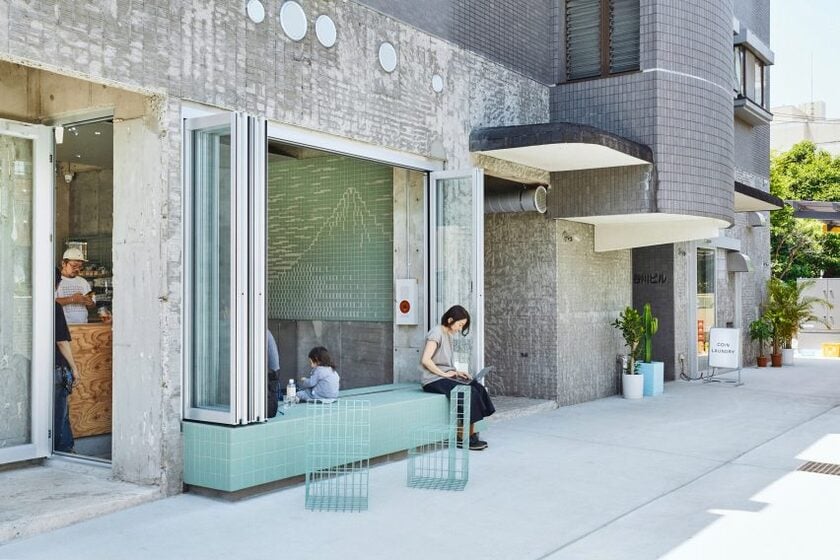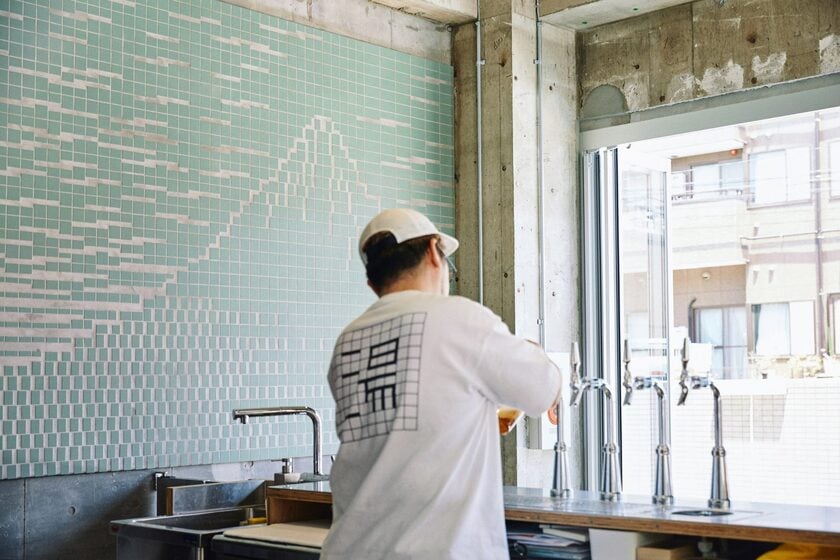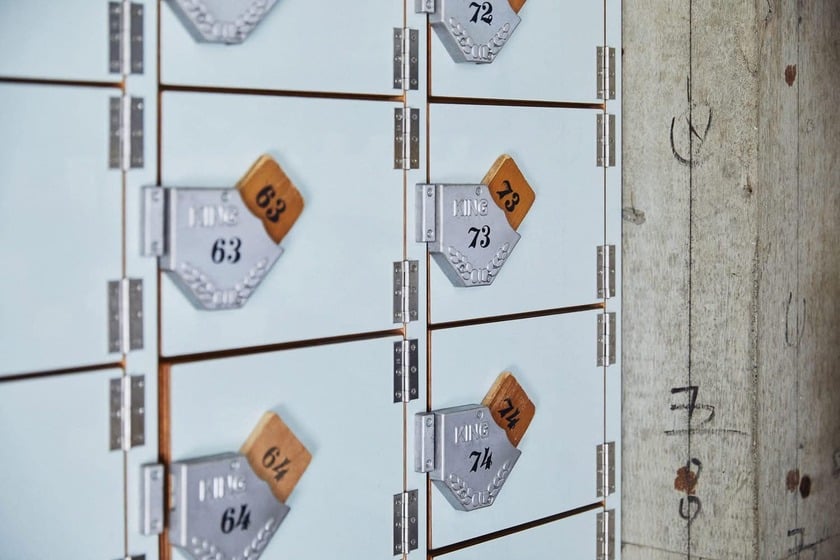In the heart of bustling Tokyo, where the hustle and bustle of life drags people into the whirlpool of work and daily worries, Komaeyu Public Bathhouse appears as a peaceful retreat. Stepping into Komaeyu, you will feel a distinct difference, as if time stops and all worries disappear. More than just a sento (public bathhouse), Komaeyu is a work of art, a living testament to the wonderful blend of traditional values and modern breath, where you can find balance in your soul.

The bathhouse is located in the Tokyo suburb of Komae.
The intersection of past and present
In Japanese culture, public baths, or “sento,” are not just an amenity, but an integral part of social life. Sento serve as cozy community spaces where locals from all walks of life can meet, socialize, and relax after a long day of work.

Komaeyu Public Bathhouse, located in a suburb of Tokyo, is the second public bathhouse renovation project by Schemata Architects.
The popularity of sento stems from Japan's history and unique living conditions. In the past, many Japanese homes did not have private bathrooms, especially in densely populated urban areas. Sento were created to meet people's personal hygiene needs, while also providing a spacious, comfortable space for people to soak in hot water, dispel fatigue and regenerate energy.
Even today, even though most households have their own bathrooms, sento still holds an important place in the hearts of Japanese people. Sento is not only a place to bathe, but also a place for people to meet, chat and share stories of everyday life. It is an indispensable part of the local community, a place to preserve and promote good traditional cultural values.
People often confuse sento and onsen (hot springs) as the same thing, but the main difference is that sento use regular hot water to bathe while onsen get their water from natural hot springs. Both sento and onsen are fun to experience, and over time, many establishments that house sento and onsen have added unique perks to their facilities, including artwork, saunas, or even eateries.
With its great cultural and social values, sento deserves to be a "staple" in Japanese culture, a symbol of community cohesion and a place to preserve good traditional values.

After World War II, many bathhouses in this area painted Mount Fuji on the walls as a symbol of hope.
Komaeyu Public Bathhouse, located in a peaceful suburb of Tokyo, is not just an ordinary public bathhouse but a unique architectural work, a place where tradition and modernity meet. The Komaeyu renovation project is the second public bathhouse renovation project undertaken by Schemata Architects, under the talented direction of architect Jo Nagasaka.
With the desire to preserve Komaeyu and prevent its precious traditional values from being lost, Mr. Nishikawa, the owner of the bathhouse, decided to renew this space, breathing new life into it to attract young people. To realize this vision, Mr. Nishikawa sought out the talented architect Jo Nagasaka, who is famous for his ability to harmoniously combine tradition and modernity in his works. Architect Nagasaka accepted this challenge and embarked on the journey to "revive" Komaeyu.
Unique architecture preserves traditional Japanese values
Under the talented hands of architect Nagasaka, Komaeyu has taken on a new look. Jo Nagasaka's design not only preserves the traditional spirit of an old sento (public bathhouse), but also breathes new life into it, bringing a modern breath to this space.

"Komaeyu was inspired by Nishikiyu, a bathhouse in Kyoto that no longer exists," Nagasaka told Dezeen
Cool green spaces are cleverly incorporated into the design, creating a relaxing oasis in the heart of bustling Tokyo. The delicately arranged potted plants bring a sense of closeness to nature, helping customers feel more relaxed and comfortable.
The comfortable sauna room is equipped with modern equipment, meeting the increasing health care needs of the people. After stressful and tiring working hours, customers can come here to sauna, relieve stress and restore health.


Their green color was chosen to represent the greenery surrounding the bathhouse, providing a green space in the heart of Tokyo.
Komaeyu’s signature feature is its stylish bar. This bar is not only a place to enjoy delicious drinks, but also a place for people to meet, socialize, and share stories of everyday life.

This time, Komaeyu Public Bathhouse's new seaweed

Before entering a Japanese sento, there are some basic rules you should know to ensure a relaxing and fulfilling experience. Generally, you should bring your own toiletries such as shampoo, shower gel, towels, etc. However, you can also buy these items at the sento, some even provide them for free.
When you enter the sento, you will see a small window or reception desk where you will pay the entrance fee to the staff. Once you have paid, you will be directed to the changing area. The changing area is usually divided into two separate areas for men and women. Here you will find small lockers to store your personal belongings. Be prepared to be completely naked when entering the bathing area, as clothes are not allowed in the baths.



Before you enter the main shower area, you will see a small stack of towels. You can use this towel to partially cover your body (and dry off before leaving). You can bring this towel into the main shower area, but try to keep it from falling into the tub. It is best to place it on your head for safekeeping.
In the bathing area, you will find showers and large bathtubs. Please wash yourself thoroughly before entering the communal bath. Please do not pour soap or shampoo directly into the bathtub.

Komaeyu Public Bathhouse is not only an architectural work but also a testament to the conservation spirit of the owner - Mr. Nishikawa, who inherited and continued to operate the bathhouse from his father's generation.
Komaeyu is not only a place to relax, but also a bridge between generations. Here, the elderly can reminisce about a bygone era, while the young can explore the beauty of traditional Japanese culture. Komaeyu is a place where Japanese culture is preserved and developed, where the past and the future blend together in each warm steam.

Looking at this exquisite design, it can be seen that although times change, Japanese culture still flows in the veins of each generation.
Coming to Komaeyu, visitors will feel a Tokyo that is both familiar and strange. Familiar because traditional cultural values are still preserved, strange because the space has been "renovated", becoming more modern and convenient. Komaeyu is an ideal destination for those who want to experience the unique combination of tradition and modernity, a place where you can find peace in the heart of the bustling city.




































